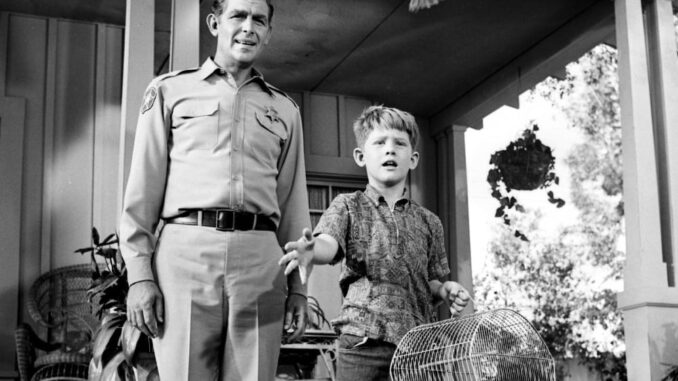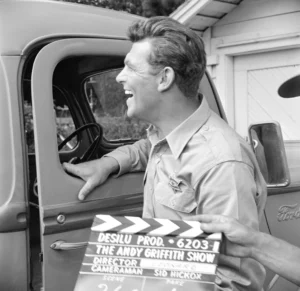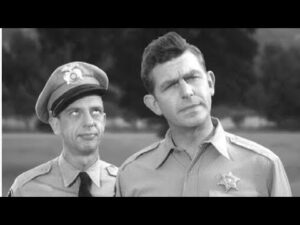
When you think of ‘The Andy Griffith Show,’ you might picture idyllic scenes of Mayberry, heartfelt moments, and of course, the lovable Andy Taylor. Yet, did you know that Andy Griffith himself had some reservations about the show, especially its first season? It’s surprising to learn that the very star who helped make the show iconic wasn’t entirely fond of its debut. Let’s dive into why Griffith felt this way and explore what made that first season different from the beloved series we cherish today.
The Dawn of Mayberry: A Brief Overview
Setting the Stage
‘The Andy Griffith Show’ premiered in 1960, introducing audiences to the charming small-town sheriff and his quirky cast of characters. Initially, it was a slice-of-life comedy that drew viewers in with its relatable themes and gentle humor.
Why Season One Was Different
But why was Griffith not a fan? The answer lies in the show’s initial direction. The first season leaned heavily on slapstick and broad comedy, which contrasted sharply with the more nuanced storytelling that would define later seasons.
Andy Griffith’s Vision for the Show
The Desire for Depth
Griffith envisioned a series that captured the essence of small-town life, filled with relatable moral dilemmas rather than mere laughs. He believed that comedy should spring from character development and genuine relationships, not just from antics.
A Shift in Tone
As the show progressed, it evolved into a blend of humor and heartfelt moments. This transformation aligned more with Griffith’s vision, which is why he later expressed dissatisfaction with the show’s early episodes.
Understanding the Characters: A Deeper Look

Andy Taylor vs. Barney Fife
In the beginning, the characters, particularly Barney Fife, played by Don Knotts, were often portrayed in an exaggerated manner. While this provided laughs, it didn’t fully showcase the depth of their personalities. Griffith believed that both Andy and Barney had more layers to explore, which became evident in later seasons.
Supporting Cast Contributions
The supporting cast also struggled with their character arcs during the first season. As the show developed, characters like Aunt Bee and Opie found their voices, allowing the narrative to become richer and more engaging.
The Role of Audience Feedback
Evolving Viewership Expectations
As audiences tuned in, they began to crave more than just surface-level comedy. Viewer feedback influenced the writers and producers, prompting a shift toward a more relatable and heartfelt narrative. This feedback was crucial in guiding the show’s evolution.
Griffith’s Response to Fans
Griffith was keenly aware of the audience’s desires. He often listened to their feedback, which made him more invested in crafting a show that resonated deeply with viewers, reinforcing his initial disappointment in season one.
Behind the Scenes: The Creative Process

The Writers’ Room Dilemma
The show’s writers initially focused on creating comedic situations that could appeal to a broad audience. However, Griffith advocated for more meaningful storylines that captured the nuances of human behavior. His input gradually shifted the tone of the show, leading to a more balanced approach in subsequent seasons.
The Impact of Don Knotts
Don Knotts, who played Barney Fife, was instrumental in refining the show’s comedic style. His collaboration with Griffith led to a more dynamic and humorous interplay, setting the stage for future character developments.
From Critique to Legacy: Griffith’s Reflection
Looking Back at Season One
Years later, Griffith reflected on the first season with a sense of nostalgia but also critique. He acknowledged the show’s foundational role in establishing the characters and setting but maintained that it was not a true representation of what the series would become.
The Journey to Perfection
Griffith’s desire for improvement fueled the show’s transformation. Each subsequent season built upon the foundation laid in season one, leading to a series that not only entertained but also touched the hearts of millions.
Cultural Impact of ‘The Andy Griffith Show’
A Mirror to Society
The series became a cultural touchstone, showcasing the values of friendship, community, and integrity. Its gentle humor and heartfelt lessons resonated with audiences, making it a beloved classic.
Legacy of the Show
Today, ‘The Andy Griffith Show’ remains a staple of American television history. Its ability to tackle complex themes while maintaining a lighthearted tone is a testament to the evolution that Griffith championed throughout the series.
Conclusion
Andy Griffith’s mixed feelings about the first season of ‘The Andy Griffith Show’ highlight the delicate balance between comedy and storytelling. While the debut season had its flaws, it laid the groundwork for a series that would ultimately capture the hearts of viewers everywhere. Griffith’s vision for depth and character development transformed the show into a beloved classic, reminding us that even the most iconic programs can evolve over time.
